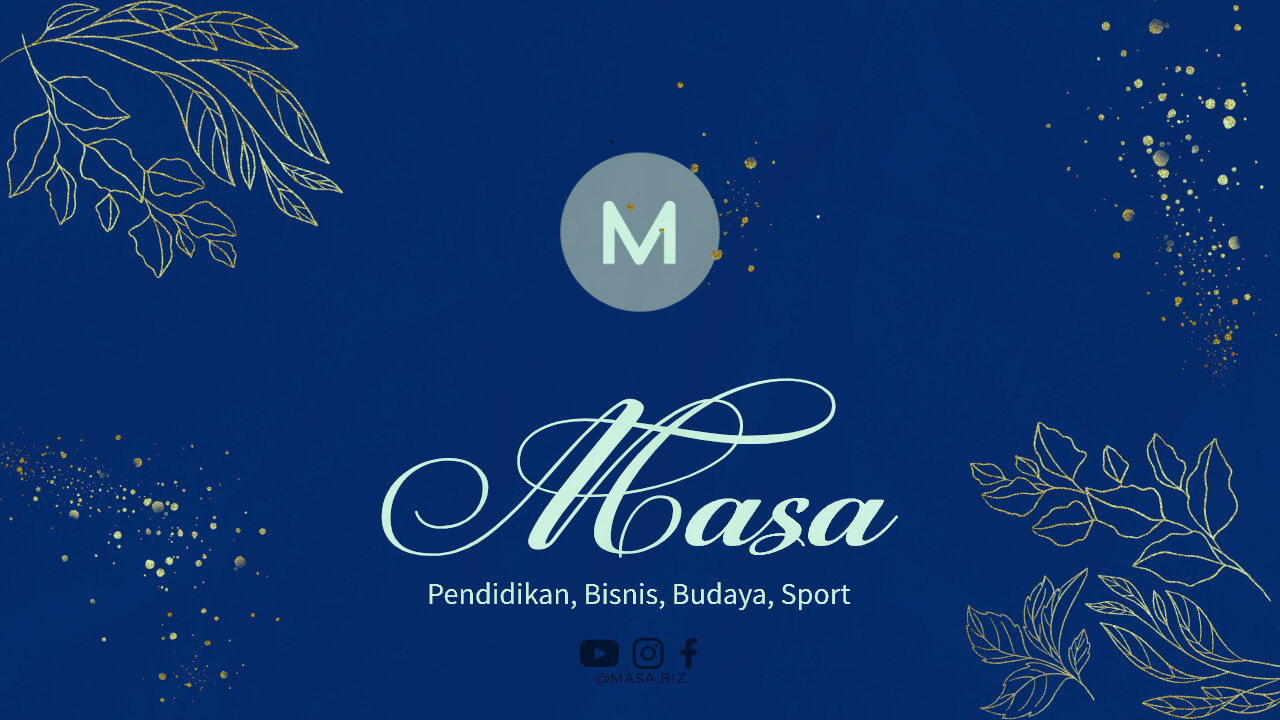Introduction
Are you tired of feeling overwhelmed by your never-ending to-do list? Do you struggle to complete tasks on time and find yourself constantly playing catch-up? If so, it’s time to discover the transformative power of Verb 3 Finish and the invaluable role of Makasi in boosting your productivity. In this comprehensive guide, we will delve deeper into the intricacies of these concepts and provide you with the tools and techniques to revolutionize how you approach and complete your tasks. So, let’s embark on this journey toward enhanced productivity together!
Understanding Verb 3 Finish
When it comes to productivity, finishing tasks effectively and efficiently is paramount. Verb 3 Finish is not just about completing tasks; it’s about doing so with intention, focus, and purpose. Let’s explore some key principles that contribute to mastering Verb 3 Finish.
Setting Clear Goals
Setting clear, well-defined goals is the foundation of any productive endeavor. When you have a specific target in mind, it becomes easier to prioritize tasks and allocate your time and resources accordingly. Take the time to reflect on what you want to achieve and break down your goals into smaller, manageable milestones. This will not only provide you with a roadmap but also serve as a source of motivation and direction.
Creating SMART Goals
SMART goals are specific, measurable, achievable, relevant, and time-bound. By applying these criteria to your goals, you ensure that they are well-defined and actionable. Specificity eliminates ambiguity and provides clarity on what needs to be accomplished. Measurability allows you to track progress and celebrate milestones. Achievability ensures that your goals are realistic and attainable. Relevance ensures that your goals align with your broader objectives. Time-bound goals come with a sense of urgency, preventing procrastination and keeping you focused.
Breaking Down Tasks
Large, complex tasks can be overwhelming and demotivating. To overcome this, break them down into smaller, more manageable subtasks. By doing so, you create a sense of accomplishment with each completed subtask, which fuels your motivation and propels you forward. Additionally, breaking down tasks allows you to plan and allocate your time more effectively, ensuring that you don’t get stuck on a single task for an extended period.
Utilizing Prioritization Techniques
Prioritization is key to effective task management. Not all tasks are created equal, and some carry more weight and urgency than others. To prioritize effectively, consider the following techniques:
Eisenhower Matrix
The Eisenhower Matrix, also known as the Urgent-Important Matrix, is a powerful tool for prioritizing tasks. It categorizes tasks into four quadrants based on their urgency and importance:
- Urgent and Important tasks: These tasks require immediate attention and should be tackled first.
- Important but not Urgent tasks: These tasks are significant but can be scheduled for later completion.
- Urgent but not Important tasks: These tasks should be delegated whenever possible to free up time for more crucial activities.
- Not Urgent and Not Important tasks: These tasks are low-priority and can be eliminated or postponed.
By using the Eisenhower Matrix, you can allocate your time and energy where it matters most and avoid being caught up in unimportant, time-consuming tasks.
Pareto Principle
The Pareto Principle, also known as the 80/20 rule, states that 80% of your results come from 20% of your efforts. Apply this principle to your task management by identifying the 20% of tasks that will yield the most significant impact. Focus your energy on these high-impact tasks, and you will maximize your productivity and achieve better results.
ABC Analysis
The ABC Analysis technique involves categorizing tasks into three categories:
- A-Tasks: High-priority tasks that have severe consequences if not completed.
- B-Tasks: Medium-priority tasks that have moderate consequences if not completed.
- C-Tasks: Low-priority tasks that have minimal consequences if not completed.
By categorizing tasks using this method, you can ensure that you tackle the most important tasks first, followed by the moderately important tasks, and then the less critical ones.
Eliminating Distractions
Distractions are one of the biggest productivity killers. To master Verb 3 Finish, you must learn to identify and minimize distractions in your environment. Here are some strategies to help you stay focused:
Create a Dedicated Workspace
Designate a specific area in your home or office solely for work-related activities. This space should be free from distractions such as television, social media, or noisy family members. By having a dedicated workspace, you can train your mind to associate that area with productivity and concentration.
Turn Off Notifications
Notifications from emails, social media, and messaging apps can constantly interrupt your workflow. To maintain focus, turn off notifications or put your devices on silent mode during dedicated work periods. Schedule specific times to check and respond to messages, ensuring they don’t disrupt your concentration.
Manage Your Digital Environment
Organize your digital workspace by closing unnecessary tabs, bookmarking important websites, and using productivity tools to streamline your workflow. Keep your desktop clutter-free and create folders to categorize files and documents. A clean and organized digital environment promotes efficiency and reduces distractions.
Implement Time Blocking
Time blocking involves scheduling specific blocks of time for different tasks or activities. By allocating dedicated time slots for focused work, meetings, breaks, and personal activities, you create structure and minimize the likelihood of distractions derailing your progress. Stick to your time blocks as much as possible and avoid multitasking, as it can lead to decreased productivity and increased errors.
The Power of Makasi
The concept of Makasi, meaning “thank you” in Indonesian, plays a significant role in the Verb 3 Finish technique. It goes beyond expressing gratitude to others; it involves acknowledging and appreciating your own efforts and accomplishments. Understanding the power of Makasi can have a profound impact on your mindset and overall productivity.
Cultivating a Positive Mindset
Practicing Makasi involves recognizing and celebrating even the smallest achievements. By doing so, you cultivate a positive mindset that reinforces your motivation and confidence. Each completed task becomes a cause for celebration, no matter how insignificant it may seem. This positive reinforcement encourages you to keep moving forward, even when faced with more challenging or daunting tasks.
Building Momentum
Makasi acts as a catalyst for building momentum in your productivity journey. When you express gratitude for each completed task, you create a sense of accomplishment and fulfillment. This positive energy propels you to tackle the next task with increased enthusiasm and determination. As you continue to build momentum, your productivity snowballs, and you become more efficient at completing tasks.
Enhancing Self-Appreciation
As you practice Makasi, you develop a deeper sense of self-appreciation. You acknowledge your abilities, efforts, and progress. This self-appreciation boosts your self-esteem and confidence, empowering you to take on more significant challenges and strive for greater achievements. By recognizing and valuing your own contributions, you become more motivated to continue improving and reaching your goals.
Implementing Verb 3 Finish and Makasi Together
Now that we’ve explored the individual components of Verb 3 Finish and the power of Makasi, it’s time to bring them together and create a holistic approach to productivity. Here’s how:
Step 1: Set Clear Goals
Begin by setting clear, SMART goals that align with your broader objectives. Write them down, visualize your success, and break them down into actionable steps. Establishing a roadmap will provide you with direction and motivation.
Step 2: Prioritize Tasks
Use prioritization techniques such as the Eisenhower Matrix, Pareto Principle, or ABC Analysis to determine which tasks require immediate attention. Identify the high-impact tasks that will propel you closer to your goals and tackle them first.
Step 3: Break Down Tasks
Take each task and break it down into smaller, more manageable subtasks. This will make the tasks less overwhelming and allow you to focus on one step at a time. Set milestones for each subtask to track your progress and celebrate your achievements along the way.
Step 4: Minimize Distractions
Create a distraction-free environment by designating a dedicated workspace, turning off notifications, and managing your digital environment. Implement time blocking to allocate specific time slots for focused work, ensuring distractions are minimized.
Step 5: Practice Makasi
Express Makasi to yourself for each completed task, no matter how small. Take a moment to acknowledge your efforts, celebrate your progress, and reinforce your motivation. Embrace a positive mindset and build momentum by appreciating your accomplishments.
Step
Step 6: Reflect and Learn
After completing a task or a set of tasks, take some time to reflect on your performance. Evaluate what went well, what could have been improved, and what lessons you can take away for future tasks. This self-reflection allows you to continuously refine and optimize your approach to Verb 3 Finish.
Step 7: Iterate and Adapt
As you continue implementing Verb 3 Finish and Makasi, remember that it’s a journey of growth and improvement. Be open to adapting your methods and strategies based on what works best for you. Everyone is unique, so feel free to experiment and iterate to find the most effective way to complete your tasks efficiently.
Tips for Success
Break Larger Tasks into Smaller Chunks
When faced with a large task, it can be overwhelming. Break it down into smaller, more manageable chunks that are easier to tackle. This approach not only increases your productivity but also gives you a sense of accomplishment with each completed subtask.
Use Productivity Tools or Apps
Utilize productivity tools or apps to help you track your progress, manage your tasks, and stay organized. From to-do lists to time management apps, there are various options available to streamline your workflow and enhance your productivity.
Take Regular Breaks
Avoid burning out by taking regular breaks. Studies have shown that breaks can improve focus, creativity, and overall productivity. Experiment with different break durations and activities to find what works best for you.
Establish a Productivity Routine
Create a routine that aligns with your natural productivity peaks. Identify the times of day when you feel most energized and focused, and schedule your most important tasks during those periods. By working with your body’s natural rhythm, you can optimize your productivity and accomplish more in less time.
Stay Organized
Organization is key to maintaining productivity. Create to-do lists, prioritize tasks, and plan your day in advance. This will help you stay on track, avoid wasting time on unnecessary activities, and ensure that you are consistently making progress toward your goals.
Makasi: The Key to Productivity
Makasi is not just a word; it’s a mindset that can transform how you approach and complete your tasks. By practicing gratitude and self-appreciation, you cultivate a positive mindset, build momentum, and enhance your productivity. Embrace the power of Makasi and watch as your productivity soars to new heights.
Remember, mastering Verb 3 Finish and Makasi takes time and practice. Be patient with yourself as you develop new habits and routines. Stay committed to the process, and you’ll soon experience the incredible benefits of increased productivity and a sense of accomplishment. So, start implementing these techniques today, and embark on a journey toward a more efficient, fulfilling, and productive life!




